Historic role of an Irishman in today’s presidential inauguration
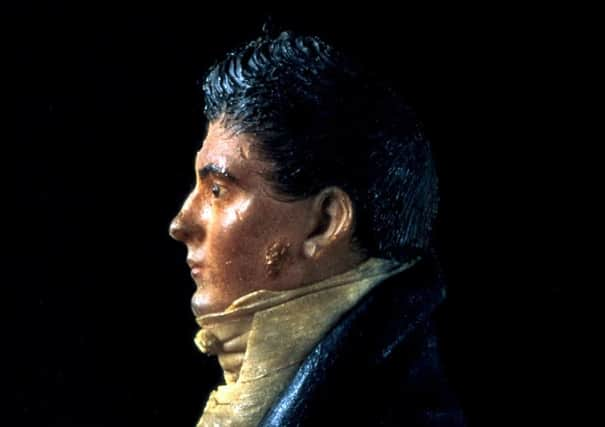

Founded in 1790 and with its name changed to the nimbler-titled National Intelligencer, it soon became well-known for its coverage of debates in the United States Congress.
It printed a death notice on December 9, 1831, which was also published in the United States Telegraph the next day: “Died in this City on the 8th inst., Capt. James Hoban, aged about 73 years. Capt. Hoban was by profession an Architect and emigrated to this country, from Ireland, at the close of the American Revolution…He designed and obtained the premium for the President’s House, and both built and rebuilt it. He also superintended the architecture of the Capitol for a considerable time.”
Advertisement
Hide AdAdvertisement
Hide AdHoban’s first and second designs for the President’s White House have been mentioned on this page before - his original plans in 1792 for its construction, and his second set of drawings for rebuilding it after being burnt down in 1814 by General Robert Ross from Rostrevor!
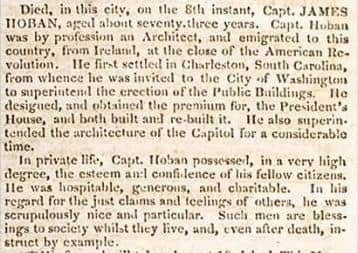

But Hoban was also responsible for overseeing the construction of the Capital from 1792 until 1802 - the grand setting for today’s Presidential inauguration of Joe Biden and Vice-President Kamala Harris - in yet another building torched by Robert Ross!
So who was Hoban and whence his forte for the design, building and rebuilding of such historic American edifices?
His death notice on December 9 and 10, 1831, attributed in capital letters to ‘A FRIEND’, continued: “In private life Capt. Hoban possessed, in a very high degree, the esteem and confidence of his fellow-citizens. He was hospitable, generous and charitable. In his regard for the just claims and feelings of others, he was scrupulously nice and particular. Such men are blessings to society while they live, and, even after death, instruct by example. His funeral will take place at 10 o’clock this morning, to which his friends are respectfully invited.”
Advertisement
Hide AdAdvertisement
Hide AdJames Hoban was born into a humble Catholic family in a thatched cottage in Callan, County Kilkenny, in 1758. He was the son of Edward Hoban, a tenant farmer, and Martha Bayne, who had four children, James, Joseph, Philip and Ann.
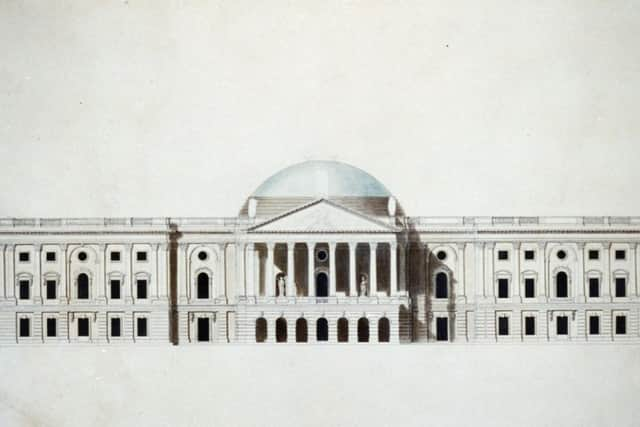

Young James displayed a talent for drawing and design in his first job, as a wheelwright and carpenter, so he entered the Royal Dublin Society to study architecture. He was an outstanding student but work was hard to find after he graduated. So he left Ireland for America in 1785, first to Charleston, South Carolina.
The young immigrant moved to Philadelphia and set up an architectural practice before returning to Charleston. Here he got some significant commissions including the South Carolina Statehouse in Charleston, and overseeing the construction of the US Capitol building.
Highly regarded, Hoban also taught architecture to young designers.
Advertisement
Hide AdAdvertisement
Hide AdIn 1791 he met President George Washington who was impressed with the young Irish designer, particularly with his elegant, Irish Georgian style.
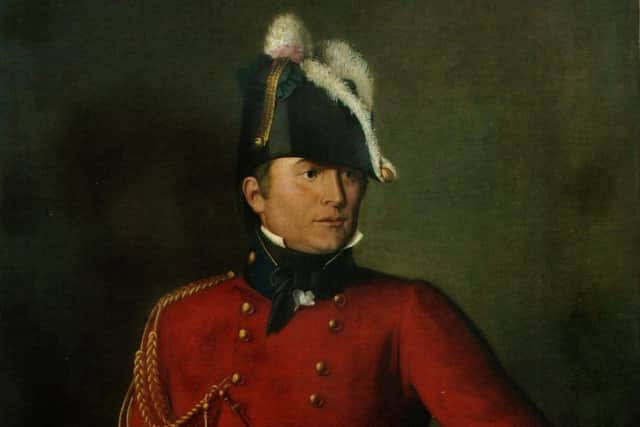

In July 1792, after an open competition, the President and his advisors chose Hoban’s design for the executive mansion - The White House - inspired by Dublin’s Leinster House.
Construction was delayed as there weren’t enough skilled workers to build it and Hoban was asked to redesign it, from three stories to two.
Though it wasn’t yet finished President John Adams and his wife Abigail moved into the mansion early in November 1800. Apparently they found it ‘too cold’ - probably because it wasn’t completed - but Hoban’s White House was the springboard for other important commissions and he designed many of the capital city’s hotels, government buildings and expensive private residences.
Advertisement
Hide AdAdvertisement
Hide AdAfter the White House was burned down in 1814 by Rostrevor’s General Robert Ross, Hoban was commissioned to rebuild it, virtually a total redesign as the structure had been almost completely destroyed. Thus the White House was raised, razed and raised again by Irishmen!
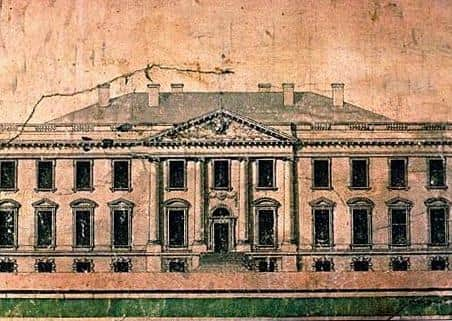

Hoban’s responsibilities for the Capitol weren’t as straightforward as for the White House. Around ten architects entered a competition in 1792 to design the Capitol, all unsuccessfully. One of the better submissions, by French-trained architect Stephen Hallet, was thought to be too French and too costly!
A late entry for the competition, by amateur architect William Thornton, was officially approved in April 1793, and following some high-level diplomacy, Hallet was appointed to review Thornton’s plans, develop cost estimates, and serve as superintendent of construction. But the relationship was tetchy and James Hoban, much acclaimed for his ongoing White House project, was brought in to revise and oversee the design and construction of the Capitol.
On September 18, 1793 President George Washington laid the cornerstone, and construction proceeded with Hallet working under Hoban.
Advertisement
Hide AdAdvertisement
Hide AdOfficial records held by the Bureau of Public Buildings and Works in Washington and signed on September 23, 1793 show that the building commissioners directed that “Mr. James Hoban take on himself the general super intendency of the Capitol and that the work thereof be conducted agreeable to the orders and directions which may be given from time to time.”
So the towering stone setting for today’s inaugurations was supervised, managed and administered by Hoban, with President Biden, Vice-President Harris and their spouses taken afterwards to Hoban’s White House by a special military escort.